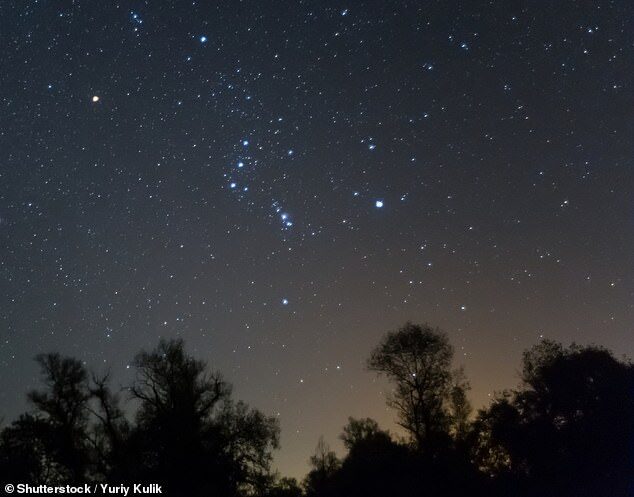
Betelgeuse, the orange-red outlier among the stars that make up the constellation Orion, will seemingly disappear for 12 seconds this Monday night, December 11, when it is briefly blocked by an asteroid.
While asteroids pass between Earth and the stars all the time, the rarity of Monday's event stems from the asteroid, 319 Leona, hitting a sweet spot that will leave a 'ring of fire' visible around Betelgeuse.
Locals in the state of Florida, as well as parts of eastern Mexico, southern Europe and northern Asia will be in a perfect line-of-sight to see it.
But for everyone else, Betelgeuse's rare 'occlusion' will be visible via a livestream, hosted by the Virtual Telescope Project in Italy, starting at 8PM Eastern on Monday.
Although time will be of the essence during this 12-second window, astronomers hope to do more serious sky-watching — using the occlusion to map this supergiant red sun's surface, which has undergone an odd dimming over the past four years.
'This is very exceptional. Basically, it's a once-in-a-lifetime opportunity,' as astrophysicist Miguel Montargès of the Paris Observatory, told Business Insider.
For Earthbound observatories, this outer region of the star's hot charged gases would be otherwise drowned out by the blinding glow from the center of Betelgeuse, according to Montargès.
The eclipse-like 'occultation' will help stellar astrophysicists collect imaging data from the surface of Betelgeuse to better understand what are known as the red supergiant's 'convective cells': the paths by which heated gas moves around the star.
Montargès expects that the data collected might help physicists improve their models for how a planetary system, like our own solar system, is born.
Astrophysicist Gianluca Masi, director of the Virtual Telescope Project which will livestream the celestial event, noted that the rare occurrence will also help scientists study the 319 Leona asteroid as well.



[Link]
Betelgeuse will be ECLIPSED. IT represents honors wealth fame or shadow side war and carnage.
(Moon debilitated as well in conjunction with Mars -- weaknesses, illnesses, accidents, violence Dec 12, 13, ends and is lessened on 14th) Don't start new projects, good energy for rest sleep n tieing up older projects and staying out of trouble. The MOON represents the common people, feelings n thoughts, therefore the collective and the individual will have this direct experience.
[Link]